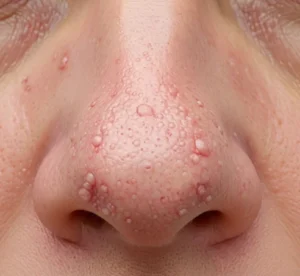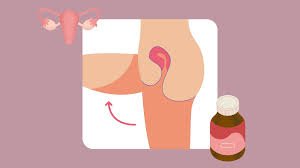Overview
Ataxia is a neurological condition characterized by lack of voluntary coordination of muscle movements, resulting in unsteady motion, balance difficulties, and impaired fine motor skills. It is not a disease itself but a symptom of underlying disorders affecting the cerebellum, spinal cord, peripheral nerves, or vestibular system.
In South Korea, neurology clinics and rehabilitation centers provide comprehensive evaluation, diagnosis, and management of ataxia. Early recognition allows clinicians to identify underlying causes, prevent complications, and provide supportive therapies to improve mobility and quality of life.
Key Facts
Highlights:
➡️ Ataxia affects coordination, balance, and speech, depending on the underlying cause.
➡️ It can be inherited (genetic) or acquired due to trauma, stroke, infection, or metabolic disorders.
➡️ Symptoms may appear suddenly (acute) or develop gradually (chronic).
➡️ Rehabilitation, medications, and supportive care can significantly improve function.
➡️ South Korea offers specialized care with neurologists, physiotherapists, and occupational therapists.
What is Ataxia?
Ataxia refers to a group of neurological signs that reflect dysfunction in the cerebellum, which is responsible for coordinating voluntary movements, maintaining posture, and ensuring smooth motion.
Key characteristics include:
- Unsteady gait and difficulty walking in a straight line
- Impaired fine motor tasks like writing or buttoning clothes
- Slurred speech (dysarthria)
- Tremors or involuntary movements in the hands
- Difficulty with eye movements or swallowing in severe cases
Ataxia can be classified into:
- Cerebellar Ataxia: Due to cerebellum dysfunction
- Sensory Ataxia: Due to peripheral nerve or spinal cord issues
- Vestibular Ataxia: Related to inner ear or balance disorders
What Symptoms are Related to Ataxia?
Symptoms vary depending on the type and severity of ataxia:
- Unsteady, staggering gait (ataxic gait)
- Difficulty with fine motor skills (writing, using utensils)
- Slurred or slow speech
- Tremors during voluntary movements
- Difficulty swallowing or controlling eye movements
- Loss of balance, frequent falls
- Fatigue and muscle weakness in advanced cases
What Causes / Possible Causes of Ataxia?
Highlights:
➡️ Genetic Disorders: Friedreich’s ataxia, spinocerebellar ataxias, or other hereditary syndromes.
➡️ Stroke or Brain Injury: Damage to the cerebellum or brainstem.
➡️ Multiple Sclerosis: Demyelination affecting coordination pathways.
➡️ Tumors: Cerebellar or brainstem tumors causing localized dysfunction.
➡️ Infections: Viral or bacterial infections affecting the nervous system.
➡️ Vitamin Deficiencies: Vitamin B12 or E deficiency leading to neuropathy.
➡️ Toxins: Alcohol, heavy metals, or certain medications affecting the cerebellum.
➡️ Autoimmune Disorders: Conditions such as gluten ataxia or paraneoplastic syndromes.
When Should I See My Doctor?
Highlights:
➡️ If you experience unsteady walking, frequent falls, or difficulty with coordination.
➡️ If speech becomes slurred or fine motor skills deteriorate.
➡️ For sudden onset of ataxia, which may indicate stroke, infection, or trauma.
➡️ If there is a family history of inherited ataxia, early evaluation can help with diagnosis and management.
➡️ For assessment of underlying metabolic, autoimmune, or neurological conditions.
➡️ Early intervention can prevent complications and improve quality of life.
Care and Treatment
Treatment of ataxia focuses on addressing the underlying cause and providing supportive care to improve function and safety.
Highlights:
➡️ Medications: For underlying conditions such as multiple sclerosis, autoimmune disorders, or metabolic deficiencies.
➡️ Physical Therapy: Exercises to improve balance, coordination, and muscle strength.
➡️ Occupational Therapy: Techniques and adaptive devices to manage daily activities.
➡️ Speech Therapy: For patients with dysarthria or swallowing difficulties.
➡️ Nutritional Support: Addressing vitamin deficiencies or dietary factors.
➡️ Assistive Devices: Canes, walkers, or orthotic devices to prevent falls.
➡️ Patient Education: Strategies for safety, fall prevention, and maintaining independence.
➡️ Surgical Intervention: Rarely required, but may be necessary for tumors or structural abnormalities.
Treatment Options in Korea
South Korea provides advanced, multidisciplinary care for patients with ataxia:
Highlights:
➡️ Neurology Clinics: Comprehensive evaluation, genetic testing, and diagnosis.
➡️ Rehabilitation Centers: Specialized physical and occupational therapy programs.
➡️ Speech Therapy Clinics: Support for dysarthria and swallowing difficulties.
➡️ Metabolic and Nutritional Support: Management of vitamin deficiencies or metabolic disorders.
➡️ Advanced Imaging: MRI or CT to identify structural causes or brain lesions.
➡️ Multidisciplinary Care: Collaboration between neurologists, physiotherapists, occupational therapists, and nutritionists.
➡️ Medical Tourism Support: Multilingual consultations, treatment planning, and follow-up care for international patients.













